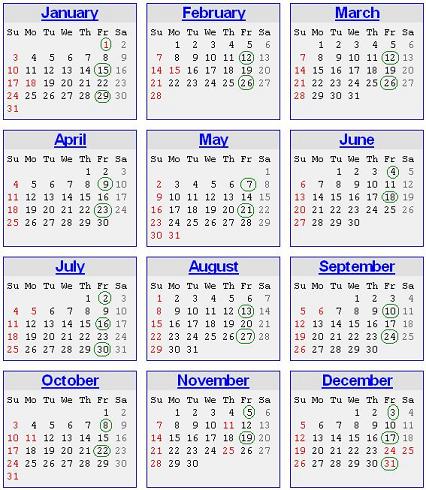Thus begins a recurring feature here at Some Blog Site – an analysis of Technical Analysis.
For those who don’t know, Technical Analysis is the study of stock charts and the process of choosing which stocks to buy based on what the price has done and is doing, not necessarily using any other information about the company.
I used the Stocks Scans page from stockcharts.com. It lists a table of the various exchanges versus the various indicators. I had seen these and wondered how well they worked. So I thought I would chart the results for a while, rather than experimenting with my money. This series of posts will update how well the various indicators are doing over time.
I limited the experiment to only the NASDAQ and NYSE. I’m sure there are some stocks or funds to be had at the other exchanges too, but I wanted to keep the experiment simple. Each day for a week, I would run the scans and collect which stocks were listed for that day. After the scans were run, I removed the stocks that were either below $1 in price or below 50,000 shares of daily volume. I used the closing price as the purchase price, and added the stock to the list of stocks in the imaginary portfolio. If an indicator were bullish or “Buy”, then the portfolio would pretend to buy the stock. If an indicator were bearish or “Sell”, then the portfolio would pretend to short sell the stock.
At the end of each day, I would also collect the closing prices of all stocks in the portfolio. These were compared to the purchase price to get the gain for the period. After the one week was done, I stopped adding stocks to the portfolio. But from here on out, those existing stocks will be tracked and the performance of the technical indicators will be observed.
This chart is not not exactly represenative for various reasons.
1. The stock scans are run at the end of each trading day. Therefore the purchase price that this chart uses is the closing price. But after the market closes, you can’t buy the stock at that price anymore.
2. The stocks are not weighted. So a $10 stock is going to have ten times the influence that a $1 stock does. This is not ideal, and does not represent how I would likely invest.
3. The indicators may need to be tracked for more than one week. Some indicators may oscillate, showing buy a stock one week and sell it the next. That means that the longer I continue this comparison, the less representative it will be.
NASDAQ
|
NASDAQ |
| Index |
Time |
MA |
MACD |
OVR |
BOL |
CHK |
Aroon |
ADX |
| -1.17 |
1 Day |
-1.87 |
-2.63 |
1.20 |
1.42 |
0.41 |
1.91 |
1.00 |
| -1.04 |
2 Days |
-5.36 |
-0.71 |
4.90 |
3.73 |
-1.77 |
2.21 |
2.97 |
| -1.49 |
3 Days |
-7.50 |
-2.32 |
8.33 |
-11.35 |
-15.70 |
-11.72 |
-13.19 |
| 1.39 |
1 Week |
-6.39 |
3.35 |
10.82 |
-13.85 |
-23.18 |
-5.88 |
-7.43 |
NYSE
|
NYSE |
| Index |
Time |
MA |
MACD |
OVR |
BOL |
CHK |
Aroon |
ADX |
| -0.71 |
1 Day |
1.28 |
0.33 |
-1.82 |
2.00 |
3.22 |
1.20 |
2.43 |
| -2.27 |
2 Days |
3.96 |
-0.66 |
-3.31 |
3.31 |
-0.89 |
1.64 |
0.60 |
| -0.17 |
3 Days |
-4.49 |
-1.43 |
3.49 |
-6.71 |
-10.97 |
-7.26 |
-7.56 |
| 1.83 |
1 Week |
-23.22 |
2.72 |
18.07 |
-16.50 |
-23.40 |
-14.34 |
-17.85 |
This is not an offer to buy or sell any securities. Any information on this site is general in nature and is not intended to be financial advice for your specific situation. Trading stocks carries risks that should be discussed with a professional financial advisor. Past performance is no guarantee of future results. Use at your own risk. This post was written in a facility that processes peanuts.
“Then you ought to have put my money in the bank, and on my arrival I would have received my money back with interest.”
– Matthew 25:27

 This is Alpha, the first-born, when he was 2YO.
This is Alpha, the first-born, when he was 2YO. This is Beta, the second-born, when he was about 2YO.
This is Beta, the second-born, when he was about 2YO. This is Gamma, the third-born, when he was about 18MO.
This is Gamma, the third-born, when he was about 18MO.


